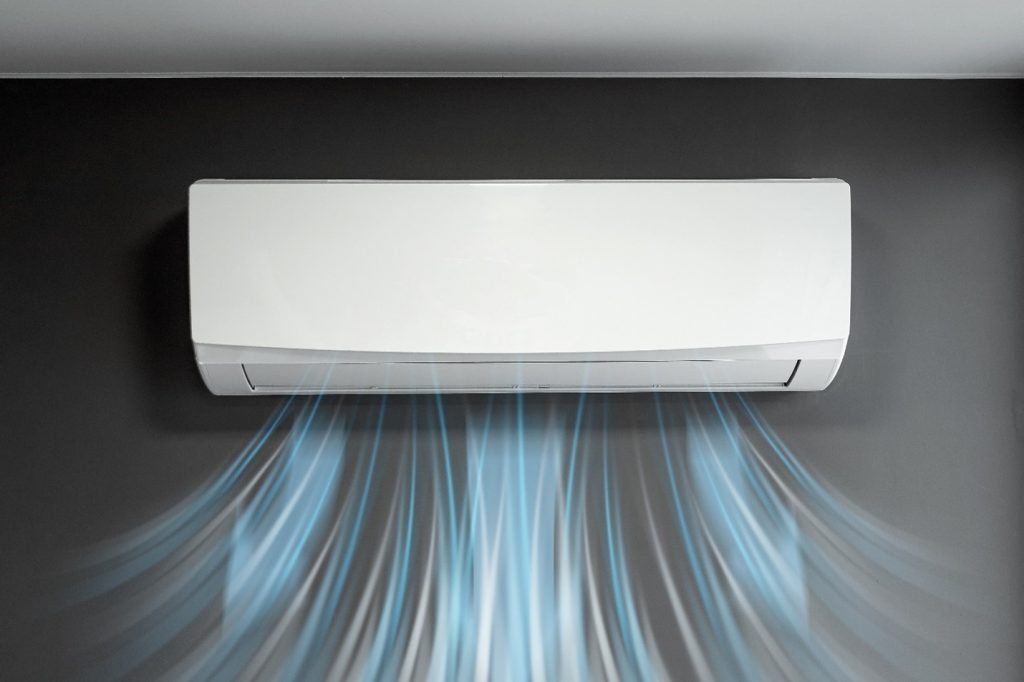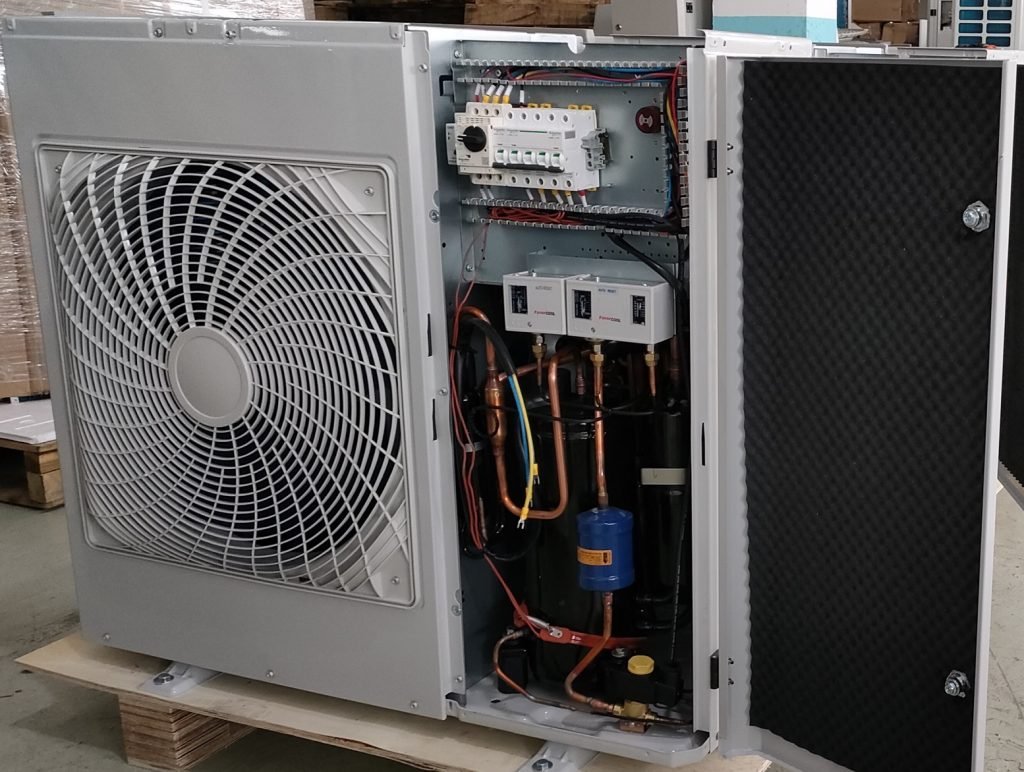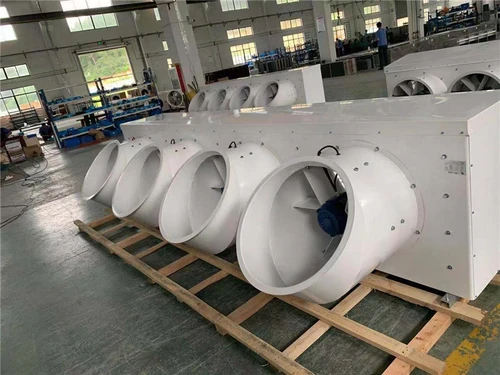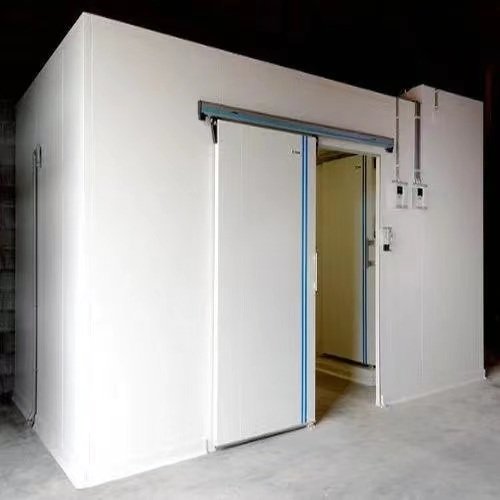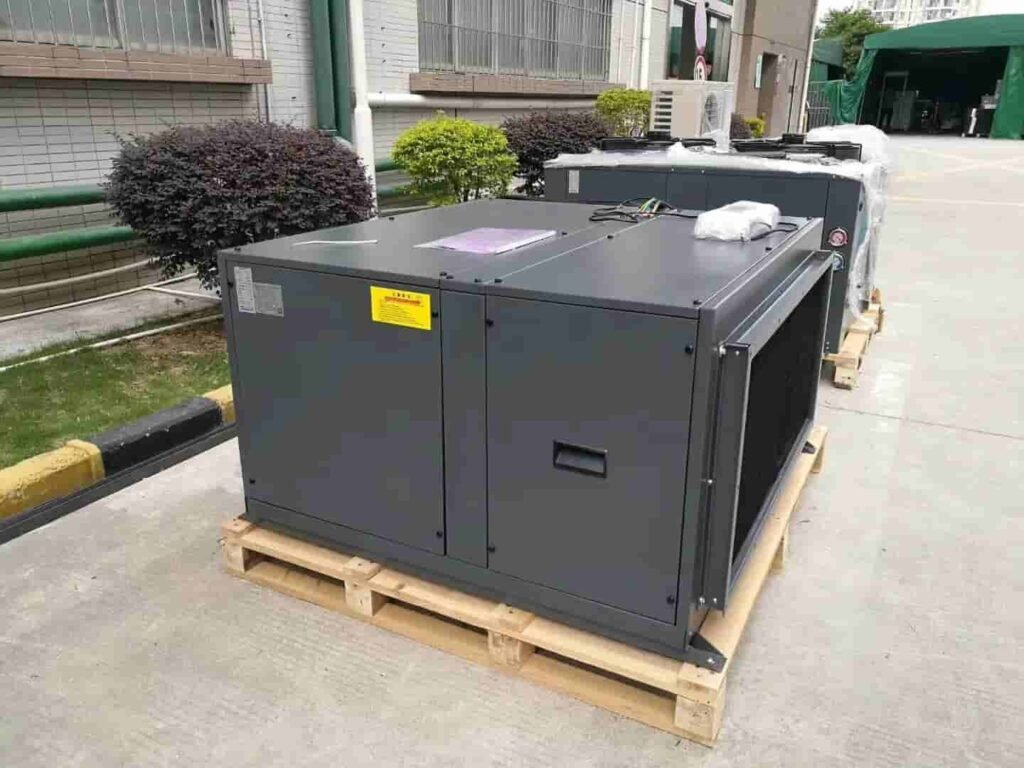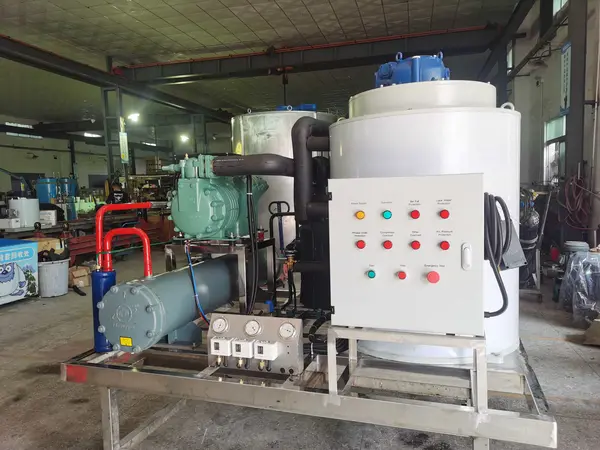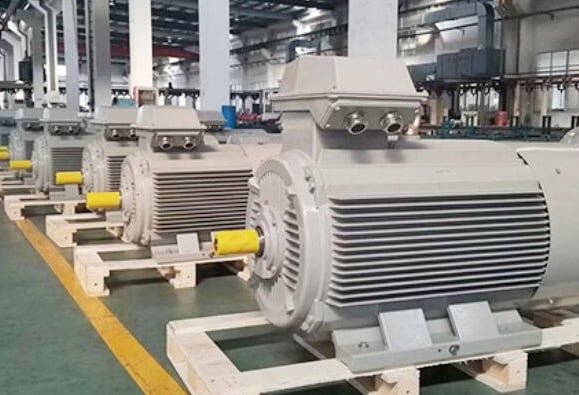Holzpakete, einschließlich Paletten, Kisten, und Dunnage, sind ein wesentlicher Bestandteil des globalen Handels für den Transport von Waren. Jedoch, Unbehandeltes Holz kann Schädlinge wie Termiten beherbergen, Tischler Ameisen, Zimmermannsbienen, und verschiedene Holzkäfer, Dies kann erhebliche ökologische und wirtschaftliche Schäden verursachen, wenn sie in neue Regionen eingeführt werden.
Die Begasung ist eine phytosiitärische Maßnahme, um diese Schädlinge zu beseitigen, verhindern ihre Ausbreitung und schützen Sie die lokalen Ökosysteme. Dies ist besonders wichtig im internationalen Handel, Wo Holzverpackungsmaterialien als Vektoren für invasive Arten fungieren können, was zu Waldschäden und landwirtschaftlichen Verlusten führt.
Der Haupttreiber für die Begasung sind die internationalen Standards für Phytosianziertmaßnahmen Nr.. 15 (Ispm 15), Nach der Internationalen Pflanzenschutzkonvention gegründet (IPPC), Ein Vertrag unter der Organisation für Lebensmittel- und Landwirtschaft (FAO) der Vereinten Nationen. Ispm 15, eingeführt in 2002, standardisiert die Behandlung von Holzverpackungen, um die Ausbreitung von Ungeziefer zu stoppen, Befriedigung des komplexen Bereichs von Beschränkungen, die zuvor von verschiedenen Behörden auferlegt wurden (Begasungsbescheinigung & Anforderungen | IContainer). Dieser Standard wird von Ländern wie den USA ausführlich übernommen, EU, Australien, und China, um die Einhaltung der Vorschriften zu gewährleisten und die biologische Vielfalt zu schützen.
Gemeinsame Schädlinge in Holzpaketen
Die Forschung zeigt mehrere Schädlinge, die üblicherweise in Holzpaketen zu finden sind, jeweils in der Lage, erhebliche Schäden zu verursachen:
- Termiten: Klein, Weiße Insekten, die Ameisen ähneln, bekannt dafür, Holz zu essen und strukturelle Schäden zu verursachen, in Nordamerika weit verbreitet (Gemeinsame Insekten, die Holz essen | Ecoguard Pest Management).
- Tischler Ameisen: Verwenden Sie Holz, um Nester zu erstellen, Strukturen im Laufe der Zeit schwächen, Besonders in den östlichen USA (Wie man Holzschädlinge identifiziert und tötet).
- Pilzpathogene: Verschiedene Arten von Pilzen, einschließlich Fleckenpilze, Fäulungspilze, und diejenigen, die Krankheiten wie Eiche verursachen, kann in Holz gedeihen und sich durch Sporen ausbreiten, die von Luft oder Insekten getragen werden.
- Nematoden: Mikroskopische Rundwürmer wie der Kiefernholz -Nematode können in den Holzgeweben leben und auf neue Bäume übertragen werden, erhebliche Schäden verursachen.
- Rüsselkäfer: Einige Rüsselkäfer befallen Holz, und ihre Larven können Schäden verursachen.
- Milben: Bestimmte Arten von Milben können Holz befallen und zusammen mit Verpackung transportiert werden.
- Zimmermannsbienen: Ausgraben von Nisttunneln in Holz ausgraben, sichtbare Schäden bei runden Eintrittslöchern verursachen, Besonders in Außenstrukturen (5 Käfer, die Holz essen und wie man sie identifiziert).
- Holzborchkäfer: Einschließlich Pulverpostkäfer, das Holz durch Larven-Tunnel auf ein mehlartiges Pulver reduziert, Zweitens nur zu Termiten im Schadenspotential (Pulverpostkäfer | Entomologie).
- Lebendes Pflanzenmaterial: Manchmal, Rinde oder andere am Holz befestigte Pflanzenmaterial können Samen oder Sporen von invasiven Pflanzen tragen.
Diese Schädlinge können die strukturelle Integrität von Holzartikeln beeinträchtigen und, wenn international transportiert, kann invasiv werden, Bedrohliche Wälder und landwirtschaftliche Systeme bedroht. Zum Beispiel, Insekten im Versand von Holz können sich in Wäldern und Feuchtgebieten ausbreiten, Verderben von Bäumen und Pflanzen, Wie im Zusammenhang mit Millionen von Holzpaletten, die täglich versandt werden (Begasungsbescheinigung & Anforderungen | IContainer).
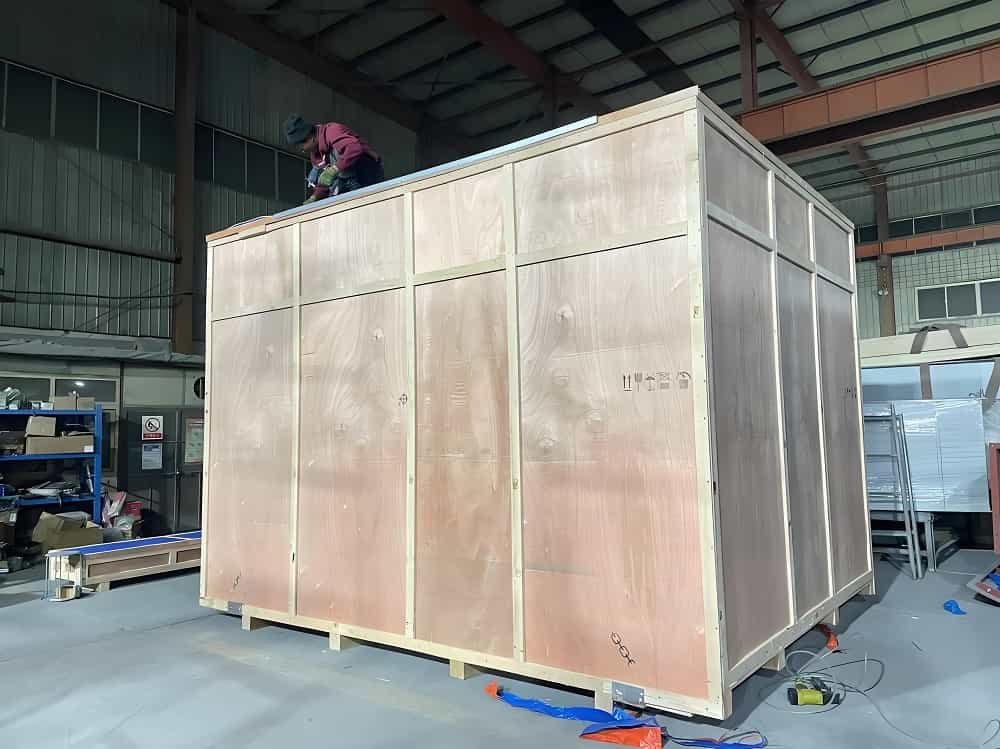
Begasungsprozess und Methoden
Die Begasung beinhaltet die Behandlung von Holzpaketen mit gasförmigen Pestiziden, um Schädlinge abzutöten. Die traditionellste Methode verwendet Methylbromid (MB), eine farblose, Geruchsloses Gas wirksam gegen eine breite Palette von Schädlingen. Der Prozess beinhaltet normalerweise:
1.Inspektion: Qualifiziertes Personal inspizieren die Holzverpackung auf Anzeichen eines Befalls und beurteilen Sie seine Eignung für die Begasung.
2.Laden und Gehäuse: Die Holzartikel werden in eine versiegelte Kammer geladen, Container, oder unter einem gassicheren Blatt. Das Gehäuse muss luftdicht sein, um die erforderliche, faszantische Konzentration aufrechtzuerhalten.
3.Berechnung und Anwendung: Die Art und Menge von Gründung werden sorgfältig basierend auf dem Volumen des Gehäuses berechnet, die Art des Schädlings gezielt, die Temperatur, und die Belichtungszeit. Zu den häufigen Gründungen gehören:
- Methylbromid (MB): Historisch weit verbreitet, In vielen Ländern wird aufgrund seiner Ozonabschaltungseigenschaften jedoch in vielen Ländern eingesetzt. Die Vorschriften bezüglich seiner Verwendung variieren erheblich.
- Wärmebehandlung: Holzholz für mindestens 56 ° C auf eine minimale Kerntemperatur erhitzen 30 Protokoll, Eine nichtchemische Methode, die unter ISPM weithin akzeptiert wird 15 (Holzverpackungsmaterial | Tier- und Pflanzengesundheitsinspektionsservice).
- Sulfylylfluorid: Verwendet für über 50 Jahre, um Termiten zu kontrollieren, mit Studien, die Potential als MB -Alternative zeigen (Durchdringung von Methylbromid, Sulfylylfluorid, Ethanedinitril und Phosphin in Holzblöcke und die Sorptionsrate der Feldungen).
- Phosphin (Ph3): Weltweit zur Getreideausströmung registriert, Obwohl er längere Expositionsperioden benötigt (>5 Tage) Für Eier und Puppen (Durchdringung von Methylbromid, Sulfylylfluorid, Ethanedinitril und Phosphin in Holzblöcke und die Sorptionsrate der Feldungen).
- Ethanedinitril (C2N2): Ein patentierter, begasungsvoller Versprechen für die Quarantänebehandlung, patentiert unter dem chemischen Namen Cyanogen (Durchdringung von Methylbromid, Sulfylylfluorid, Ethanedinitril und Phosphin in Holzblöcke und die Sorptionsrate der Feldungen).
4. Expositionsperiode: Der Begasungsmittel darf für einen bestimmten Zeitraum innerhalb des Gehäuses zirkulieren, zwischen mehreren Stunden bis Tagen, Abhängig vom Begasungsmittel, Pest, und Umweltbedingungen.
5. Überwachung: Während der Expositionsperiode, Die Konzentration des Begasers wird häufig überwacht, um sicherzustellen, dass sie auf effektiver Ebene bleibt.
6. Belüftung: Nach der Expositionsperiode, Das Gehäuse wird gründlich belüftet, um alle Spuren des giftigen Gases zu entfernen. Dieser Schritt ist für die Sicherheit von entscheidender Bedeutung.
7. Zertifizierung und Markierung: Sobald die Belüftung abgeschlossen ist und das Holz als sicher erachtet wird, Eine Begasungsbescheinigung wird ausgestellt, und die Holzverpackung ist mit der IPPC -Marke markiert, die die Behandlung anzeigt (z.B., MB für Methylbromid).
Forschung, wie das von Virginia Tech, entwickelt auch Vakuum- und Dampftechnologie, Verringerung der Behandlungszeit und Beseitigung des chemischen Gebrauchs, mit potenziellem Energiebedarf von ungefähr 0.052 KWh/kg Log -Masse (Eine Alternative zu Methylbromid -Log -Begasung - Holzprodukte).
Internationale Standards und Konformität
Ispm 15 Mandate, dass Holzverpackungsmaterialien mit dem IPPC -Logo behandelt und markiert werden, um die Compliance zu zertifizieren. Der Standard gilt für Materialien wie Paletten, Kisten, und Dunnage, aber ausschließt:
- Holz ≤ 6 mm dick.
- Verarbeitetes Holz (Sperrholz, Partikelplatine, Orientierter Strangbrett, Furnier über Kleber/Wärme/Druck).
- Wein/Spiritfässer während der Herstellung erhitzt.
- Geschenkboxen für Wein/Zigarren, die als schädlingsfrei bearbeitet werden.
- Sägemehl, Holzspäne, Holzwolle.
- Holz dauerhaft an Güterfahrzeugen/Behältern befestigt.
In Kombination mit nicht hergestelltem Holz, Der nicht hergestellte Teil muss behandelt und markiert werden (Holzverpackungsmaterial | Tier- und Pflanzengesundheitsinspektionsservice). Compliance wird von nationalen Pflanzenschutzorganisationen durchgesetzt (Nppos) von Exportländern, Mit den USA, die vom American Lumber Standard Committee verwaltet werden (ALSC) Im Rahmen der APHIS -Vereinbarung (Holzverpackungsmaterial | Tier- und Pflanzengesundheitsinspektionsservice).
Länderspezifische Anforderungen
Verschiedene Länder haben spezifische Vorschriften, oft mit ISPM ausrichten 15:
- Vereinigte Staaten: Erfordern Sie, dass Holzverpackungen schädlingsfrei sein, deziert, hitzebehandelt oder begastlich, und mit ISPM gekennzeichnet 15 Logo, Mit nicht konformen Sendungen gesperrt (Holzverpackungsmaterial | Tier- und Pflanzengesundheitsinspektionsservice).
- europäische Union: Mandate der Behandlung für Holzverpackungsprodukte dicker als 6 mm, nicht mit Kleber/Wärme/Druck behandelt, per ispm 15 Verfahren (Auslasungsvorschriften in der Europäischen Union: Ein Überblick).
- Australien und China: Erfordern Sie die Begasung als Quarantänemaßnahme, Mit Zertifikaten für die Meeresfracht von Meeresgütern (Was ist die Begasung in Exporten und Importen? – Fomex Greenwood).
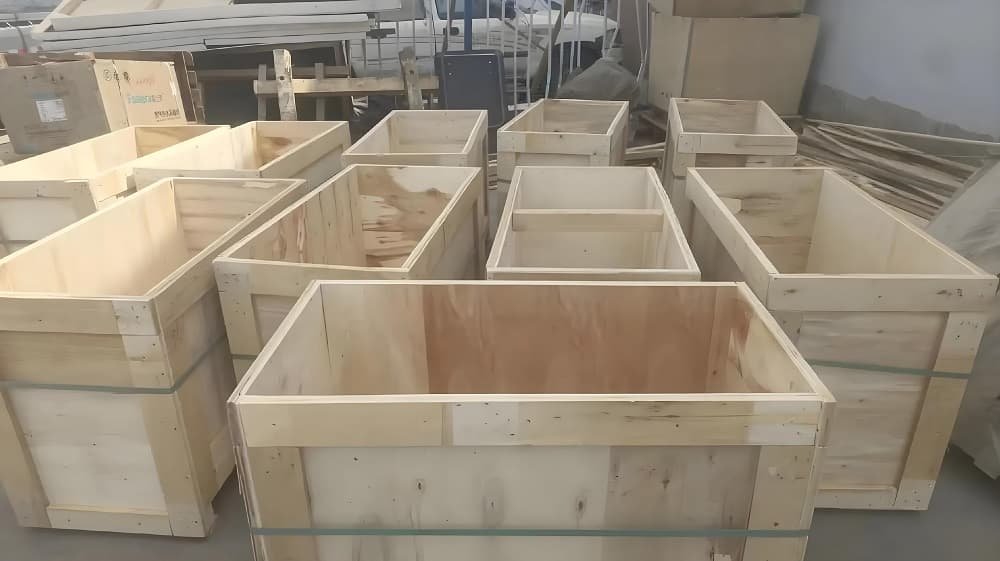
Exporteure müssen die Anforderungen des Ziellandes überprüfen, mit Optionen einschließlich des Kaufs behandeltes Material, Hersteller werden, oder Verwenden registrierter Einrichtungen (Holzverpackungsmaterial | Tier- und Pflanzengesundheitsinspektionsservice).
Wirtschaftliche und ökologische Überlegungen
Begasung sorgt für eine reibungslose Zollabfertigung, Verzögerungen vermeiden, Geldstrafen, oder Ablehnungen, das kann kostspielig sein.
Jedoch, Die Umweltauswirkungen von MB haben zu einem Vorstoß auf Alternativen geführt, bei Wärmebehandlung und anderen Methoden, die den chemischen Einsatz reduzieren.
Die Kosten der Nichteinhaltung, Strafen und Abreihen einbeziehen, unterstreicht die Bedeutung einer ordnungsgemäßen Behandlung, mit Aphis -Strafverfolgung 88 Ispm 15 Betrugsfälle über 11 Jahre, Finanzierung $329,000, und Rückerstattung von $54,937 seit 2015 (Holzverpackungsmaterial | Tier- und Pflanzengesundheitsinspektionsservice).
Best Practices und Alternativen
Über obligatorische Behandlungen hinaus, Die Übernahme von Best Practices kann das Risiko eines Schädlingsbefalls bei Holzverpackungen weiter minimieren:
- Verwendung von ausgeschautem Holz: Die Entscheidung für ausgeschautes Holz verringert die Wahrscheinlichkeit eines Schädlingsbefalls erheblich.
- Richtige Speicherung: Holzverpackung in trockener Aufbewahrung, Gut belüftete Gebiete können dazu beitragen, Pilzwachstum zu verhindern und die Attraktivität für bestimmte Schädlinge zu verringern.
- Inspektion vor der Verwendung: Durch die Überprüfung von Holzverpackungen auf Anzeichen von Schädlingsaktivitäten vor dem Verpacken von Waren können Sie die Ausbreitung von Befall verhindern.
- Lieferantenüberprüfung: Stellen Sie sicher, dass Holzverpackungslieferanten akkreditiert sind und ISPM entsprechen 15 Standards sind entscheidend.
Zusätzlich zu Best Practices, Es gibt mehrere Alternativen zur traditionellen massiven Holzverpackung:
- Technische Holzprodukte: Materialien wie Sperrholz, Orientierter Strangbrett (OSB), und Partikett sind oft von ISPM befreit 15 Vorschriften, weil der Herstellungsprozess Wärme und Druck beinhaltet, die typischerweise Schädlinge beseitigen.
- Plastikpaletten und Kisten: Diese sind langlebig, wiederverwendbar, und erfordern keine phytosanische Behandlung. Jedoch, Sie können anfangs teurer sein.
- Metallpaletten und Kisten: Ähnlich wie Plastik, Metalloptionen sind langlebig und schädlingsfrei, können aber kostspielig sein.
- Kartonage: Während für leichtere Güter geeignet ist, Karton bietet möglicherweise nicht die gleiche strukturelle Unterstützung wie Holz für schwerere Sendungen.
Die Wahl des Verpackungsmaterials hängt häufig von Faktoren wie Kosten ab, Haltbarkeitsanforderungen, Die Art der Versand der Ware, die versandt werden, und ökologische Überlegungen.
Zusammenfassung der Behandlungsmethoden und -anforderungen
| Methode | Beschreibung | Dauer/Temperatur | Umweltauswirkungen |
|---|---|---|---|
| Methylbromid | Gasausströmung zum Töten von Schädlingen, Traditionelle Methode | 24 Stunden Exposition | Ozonabstimmung, auslaufen |
| Wärmebehandlung | Holzheizung zum Töten von Schädlingen, nicht chemisch | 56° C für 30 Protokoll | Niedrig, umweltfreundlich |
| Sulfylylfluorid | Alternative fasigant, für Termiten verwendet | Variiert, Typischerweise lang | Mäßig, Weniger Ozone -Auswirkungen |
| Phosphin | Begasungsmäßig, die längere Exposition erfordern, für Körner verwendet | >5 Tage für Eier/Puppen | Mäßig, Gesundheitsbedenken |
| Ethanedinitril | Patentierter feucht, Potential für eine Quarantänebehandlung | Variiert, Forschung fortlaufend | Niedrig, aufkommende Alternative |
Diese Tabelle fasst die wichtigsten Behandlungsmethoden zusammen, ihre Prozesse, und ökologische Überlegungen, Unterstützung der Entscheidungsfindung bei der Unterstützung der Stakeholder.
Abschluss
Die Begasung oder Wärmebehandlung von Holzverpackungen ist eine wichtige Maßnahme, um die internationale Ausbreitung schädlicher Schädlinge und Krankheiten zu verhindern.
Durch Einhaltung internationaler Standards wie ISPM 15 und Verständnis von länderspezifischen Vorschriften, Unternehmen können globale Ökosysteme schützen, verhindern erhebliche wirtschaftliche Verluste, und sorgen Sie für den reibungslosen Fluss des internationalen Handels.
Dieses Engagement für phytosanische Praktiken ist eine gemeinsame Verantwortung, die zu einer gesünderen und sichereren Welt beiträgt.
Irgendwelche Kommentare?
Willkommen hinterlassen Sie eine Nachricht oder reposten.



